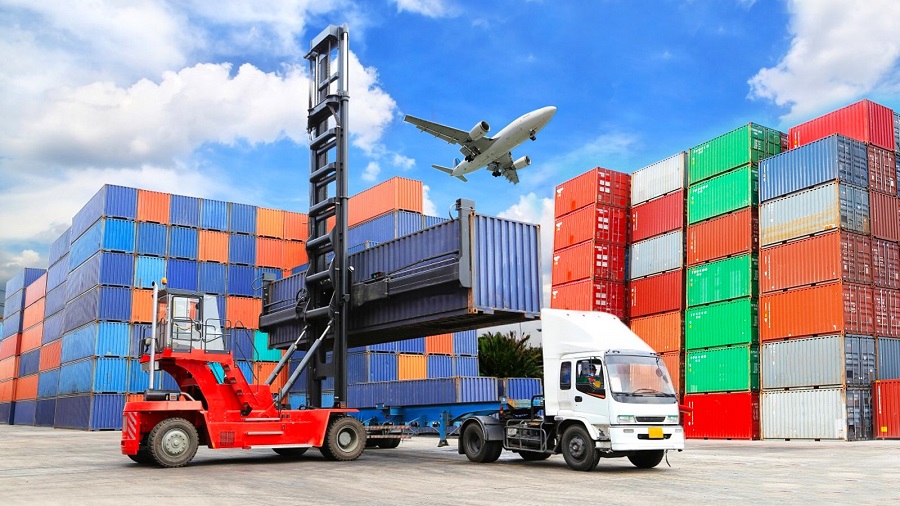According to Kearney reports, the COVID pandemic significantly disrupted 80% of supply chains around the world, with the result that 47% of supply chain operations will be overhauled” while “55% of companies downgraded their growth outlook” as reported by Accenture. The pandemic displayed how vulnerable most supply chains are and the relevance of it to growth plans.
In a post-pandemic world, building a sustainable supply chain has taken on new urgency. This is especially when considering supply chain disruptions will occur every 3.7 years and expected to last at least a month according to McKinsey. There is nothing like being too prepared to safeguard against disruptions. Besides risk mitigation, an effective supply chain is a competitive advantage for SMEs that are looking to move their business forward and take advantage of market opportunities. It sets a business to turn crisis into opportunity and build market share, which are key success factors.
Regardless of industry, building an agile, resilient and sustainable supply chain ecosystem depends, to a significant degree, on the efficiency of freight processes.
Here are 5 ways to build a sustainable supply chain through optimised freight management:
1. Leverage digitisation and automation: Many shippers still rely on manual activities including paper documentation systems, phone calls and email trails. The dependence on manual processes means that businesses lack access to real-time information. They spend what would be otherwise productive hours checking through contracts, spreadsheets and emails for required information. Searching for quotes for problematic routes, assessing the costs of the alternatives and diversifying modes as well as vendor network can be a slow and tedious process.
The crisis has created a climate where adopting technology is no longer a matter of choice but a necessity to successfully build a sustainable supply chain and navigate cross-border trade. Digital solutions and online-enabled processes in freight management promise to be enormously impactful. It streamlines the freight process and reduces friction in process flow. It opens up new opportunities for proactive freight planning, collaboration between multiple operational parties and one version of the truth in the entire freight value chain.
A single connected solution or platform will enhance the efficiency of quote acquisition, the booking process, shipment management and the information flow for informed decision making.
2. Gain end-to-end visibility: The lack of visibility leads to inefficiency and higher costs. Shippers are unable to assess the impact of an event, hence informed and agile decision-making becomes near impossible.
Simply put, visibility allows you to know where your cargo is and what is happening with or to it. It covers warehouse management, all modes of transportation tracking and visibility, the situation at ports and documentation stages. The goal is to gain insight into every event impacting the progress of the cargo in the freight forwarding value chain. With advance notice of potential delays, shippers can make the right decisions to avoid disruption and keep cargo moving.
Visibility is a management tool to improve freight planning, operational efficiency and lower costs. It tracks and documents the chain of custody of the cargo, hereby minimising fraud or lost shipments which reduces the risk of revenue loss.
3. Working capital management: A first defence for a business against supply chain disruptions is the health of its working capital. A strong working capital position translates into better resilience to tackle market disruptions. The challenge with maintaining one is that both the buyer and the supplier are trying to optimize their cash flows in conflicting directions. Suppliers want to receive payment as early as possible, buyers delay making payment as much as they can.
Supply chain or trade finance is one way to bridge the payment gap between these parties.
4. Implement cross docking and other warehouse management best practices: Warehousing is an important component of efficient and sustainable supply chain management. They perform a buffer function whether as a tool for cargo consolidation or distribution network management. Maximise your agility by applying cross docking for consolidation of small shipments into one large transport or deconsolidation into several trucks at a time to reduce the dispersion of stops per vehicle.
Applying best practices in warehouse management systems will lead to lower overhead costs and streamlined turnaround times. This, of course means that cargo is delivered quicker and at a more favourable price or higher margin.
5. Seek a reliable digital freight management partner: When the freight process for each shipment is managed like a “commodity”, there is little opportunity to build a sustainable supply chain system. Also, building an ecosystem of freight service suppliers for a set of shipments will involve a good degree of manual processes to collate quotes for varying boxes and routes as well as track each of these shipments. Either businesses remain with the previous ecosystem regardless of performance or repeat the process for the next set of boxes for example in the case of seasonal commodities.
Effective collaboration with partners is essential to supply chain agility. However, partnering with a freight management team that prioritises optimal operational efficiency is critical to achieving a sustainable supply chain. Businesses need partners that go beyond traditional freight forwarding to deliver optimally efficient freight management solutions using technology.

This article was written by Hio Sola-Usidame, a partner at Oneport 365, Africa’s premier digital freight forwarding platform with the sole mandate of connecting Africa to global trade.





.gif)







That’s an expert opinion and work.
Supply chain relies on freight management whereas the traditional freight forwarder roles are critical along the chain, application of technologies that improves visibility and collaboration of partners and institutions to sync the modalities for shared value and optimization of plans and strategies is the essence of supply chain management.
Leveraging technology,
Sharing data especially end-user data downstream that activates appropriate actions and strategies upstream. A well penetrated end user data greatly reduces wastage of transportation costs, wrong shipments in assortment, volumes, and market/ destination or geography. Reducing the bullwhip effect in the supply chain and freight management enables ontime deployment of equipments and labour and low incident of idle time and equipment breakdown and unreliability, due to poorly planned maintenance and servicing . Thus proper scheduling of operations, reduced bottle neck and leveling up of freight flow keeps the systems optimally working while the members of the supply chain are well off through the benefits that accrues to the supply chain members when initiatives are jointly planned, trust and open cooperation with commitment to investment and sharing of rewards and risk mitigation.
Of a truth, adopting technology, enhancing visibility for supply chain agility and resilience, using financial management tools and real-time resources that enhances proper working capital management and enhanced cash to cash and traders and retailers and distributors cash flow in other to maximize the productivity of capital are quite imperative.
Turning the warehouse to a value center enhances overall logistics and supply chain value, the adoption of cross docking means that improvement in productivity is a continuous improvement effort and performance.
Also, turning the providers of critical services like, ICT service providers, transportation and freight forwarder, warehouse operators, packaging contractors etc are all constituents or data variables that are imputed to evaluate the supply chain on the metrics of customer satisfaction, cost to serve and total supply chain cost, supply chain time-end-to-end, asset productivity, forecast accuracy, and reduction of waste and obsolescence.